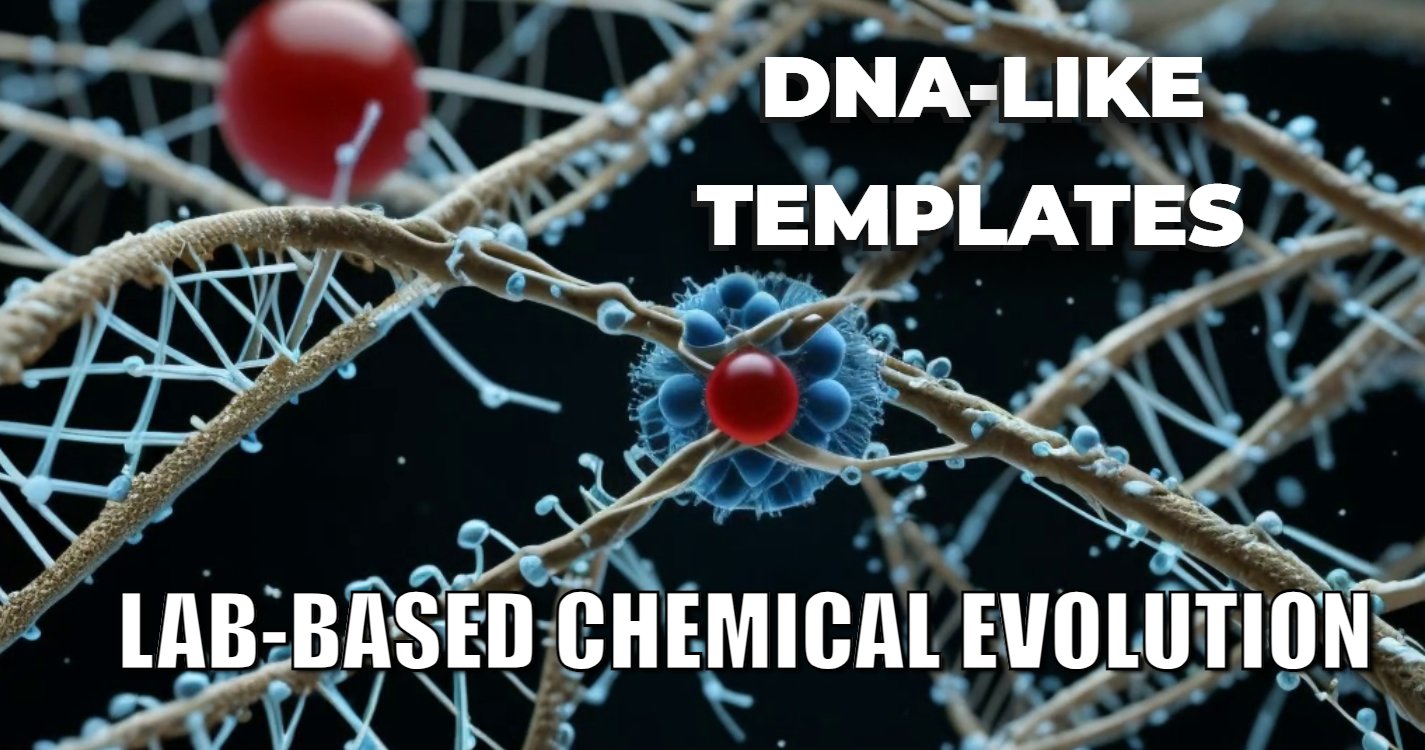Researchers have shown how evolutionary principles can be used to create and improve molecular structures, advancing the field of artificial life. Scientists made a recent discovery published in Nature Chemistry. They found that a special DNA template can guide the creation and development of artificial molecules, giving us insight into how life began.
Cracking the Code of Artificial Life: How DNA-Like Templates are Steering Chemical Evolution in the Lab
- 🧬 Selection rules in dynamic combinatorial libraries (DCLs) guide the formation of oligomers under non-equilibrium conditions, akin to genotype-phenotype interactions in evolution.
- 🧪 DNA-based templates like dA10 facilitate controlled oligomerization, enhancing oligomer stability and selectivity in solution and coacervate models.
- 🌱 Coacervate-based models demonstrate enhanced fusion behavior and purification capabilities due to template-controlled DCLs.
- 🧫 Fuel-driven oligomerization within coacervates increases internal viscosity, potentially enhancing electrode material stability.
- 🔍 Understanding selection mechanisms aids in developing tailored electrode materials for high-performance supercapacitors.
- 📈 Research highlights potential for designing novel DCLs for energy storage applications.
- 🌐 Offers insights into mimicking biological evolution principles for advanced material design.
The Evolutionary Blueprint
The study, led by Job Boekhoven and colleagues, introduces a sophisticated setup where chemical evolution is orchestrated using designed templates. These templates are akin to the DNA that guides the biological processes in living cells. The experimental system hinges on Darwinian principles—selection and survival of the fittest—applied to molecules within a dynamic environment.
Here’s how it works: the researchers utilized a DNA-based template composed of repeated adenosine units (dA10) and thymine-functionalized isophthalic acid monomers. These components were chosen because their structural properties allow them to interact in an organized manner, triggering the formation of molecular chains called oligomers.
A Symphony in a Flask
The mimicry of life’s complexity was achieved with an ingenious method involving transient anhydride bonds. Simply put, these bonds can form and then break down readily, creating a lively, ever-changing environment for molecular evolution.
The process starts with a chemical agent, 1-ethyl-3-(3-dimethylaminopropyl)carbodiimide (EDC), which fuels the formation of oligomers. Initially, the predominant product was a dimer (DynT2). However, the presence of the dA10 template significantly influenced the outcome. As the reaction progressed and the ‘fuel’ depleted, the template helped accumulate higher forms of these molecular chains (DynT3-DynT5), thereby enhancing their survival.
From Molecules to Miniature Protocells
What’s truly fascinating is how the team translated these molecular dynamics into behavior reminiscent of living cells. In a coacervate model—tiny droplets emulating cell-like environments—the designed templates not only directed the formation of specific oligomers but also impacted the structural behavior of the droplets themselves.
These coacervates, which are non-living analogs to primitive cell prototypes, exhibited fusion behaviors regulated by the template-directed chemical evolution. In essence, the template acted much like genetic material, determining which molecules thrived and thereby affecting the ‘cell’s’ physical traits.
Why This Matters
This study propels our understanding of artificial life forward. By harnessing the principles of natural selection at the molecular level, researchers can now explore new vistas in synthetic biology and bioengineering.
Imagine creating smart materials that evolve based on environmental stimuli or designing entirely new forms of life with tailored functionalities. These findings open the door to such possibilities by demonstrating that we can indeed teach molecules the language of life.
The Road Ahead
While this is a major step, the journey towards creating fully functional artificial cells—life, as we typically understand it—is a long one. Nevertheless, this research provides a robust framework for future endeavors in the quest to replicate nature’s most elusive processes in a laboratory.
Bottom Line
Researchers have not just added a fascinating piece to the puzzle of life’s origins but have also ignited imaginations about the future of synthetic biology. As we move forward, each discovery brings us one step closer to decoding and even reprogramming life itself.
Stay tuned as science edges ever closer to turning the once fantastical notions of artificial life into tangible reality!
A template for artificial life
- Rahul Dev Mukhopadhyay
- 📊 DNA-based templates could revolutionize electrode material design, enhancing stability and performance.
- 🌿 Coacervate models offer a promising platform for developing next-generation supercapacitors.
- 🧪 Tailored DCLs hold potential for achieving higher energy densities and longer cycle life.
- 📈 Integration of selection rules into material design could lead to adaptive and self-improving supercapacitor materials.
- 🌐 Opens avenues for bio-inspired approaches to energy storage with improved sustainability.




